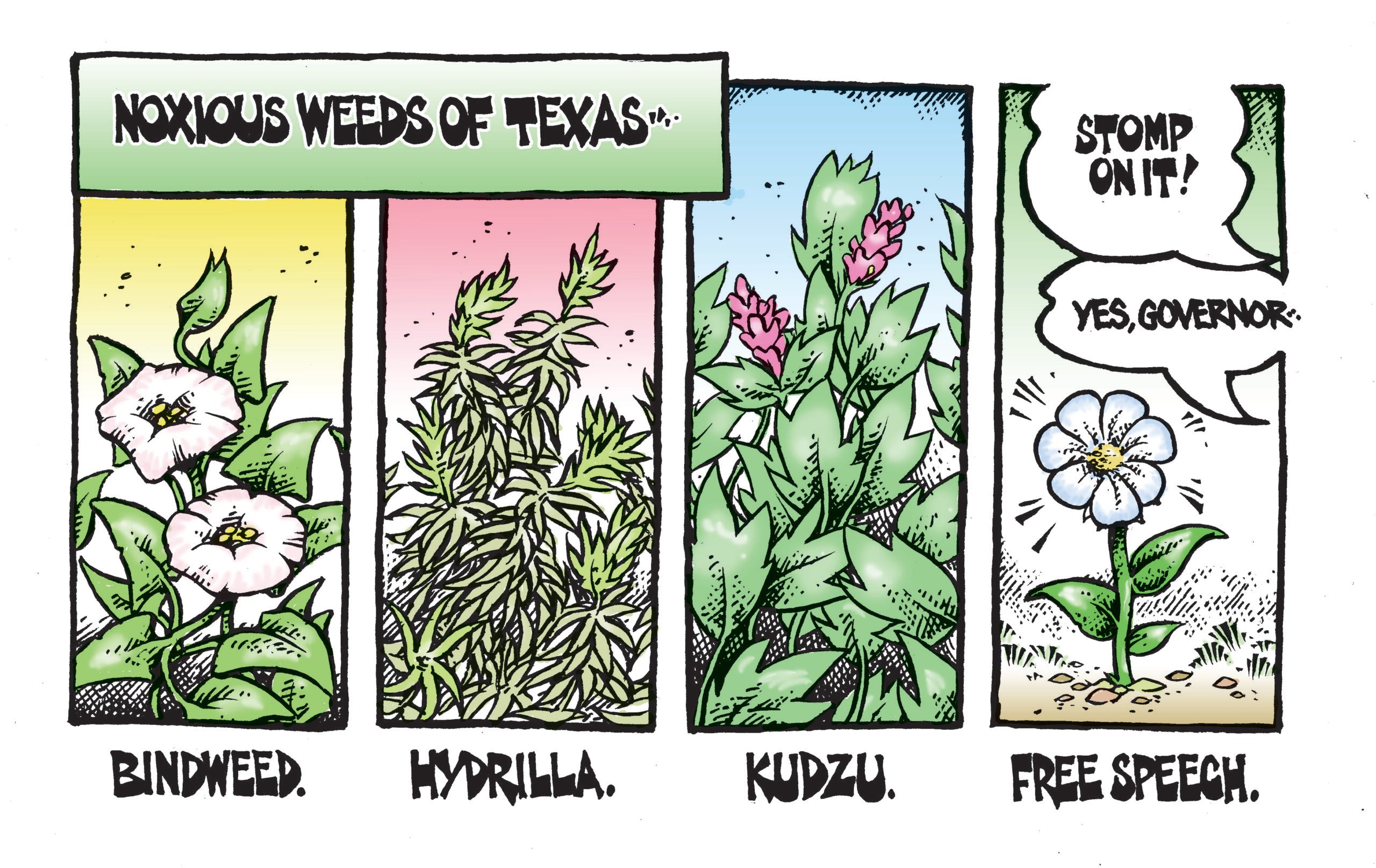ustxtxb_obs_1983_02_25_50_00018-00000_000.pdf
Page 12
“You’re clean,” he said. “But Ron Wilson, what’s he got to hide?” Louie was burning now. He had his tape recorder out, holding it two feet from his face, taping his own words. “What’s he doing, saying the Houston police force should have a citizens committee to investigate complaints? The Houston police doesn’t need any investigating. They have built a national reputation for what they do and they don’t keep it secret. They’re proud of it.” Louie held his right index finger in the air as he rewound the tape. He played back the last section, listening to his little speech, then pulled his chair up close and smiled. “Ron Wilson is just trying to keep the water off his own duck’s back. The reason you set up an investigating committee is to keep yourself from being investigated.” “I see,” I said, scribbling in my notebook. That made Louie a little nervous. He played back this last speech and turned off the machine. I could tell he was unsure of himself. It must be difficult without a Gus Mutscher or Brilab by which to chart your course. Lefty was slumped over in his chair. Then he perked up enough to say, “We have an expert coming in from New York to consult with us on this thing.” “Let me guess,” I said. “Roy Cohn.” “How did you know? Who you been talking to?” Louie was shaken to the core. The coffee stains formed a Rorschach-like pattern on his coat. “Another hunch,” I said. Louie seemed defeated. He pulled his Stetson down to his mouth and turned away to sulk. Anyone would have felt sorry for him. I decided that it might cheer him up a bit if I gave him a lead. “Say, Louie,” I said. “What about that ten-year-old girl, the one who kept asking Mark White those questions about museums at the press conference? How did she get to ask two long questions without batting an eyelash? What did she mean by museums? How did she get an exclusive interview with the Gov after the briefing? Did she drive herself to the Capitol on a hardship license? Did she sit strapped into a carseat? How did she manage a press pass when she’s too short for the photo machine?” I could see this was drawing Louie out. He pushed the Stetson back above the dark glasses and said “Yeah, you have something there. Who was that little girl anyway? Where can I track her down?” I told him he might lurk around Brooke elementary, third wing, second door from the breezeway. Louie stood up, waved his tape recorder in farewell, and slithered back up the Capitol stairs. It was 9:05 a.m. There was a lot of lurking yet to be done. G. R. BOOKS AND THE CULTURE Porter’s Fabrications Elude Biographer By Beverly Lowry KATHERINE ANNE PORTER, A LIFE New York: Simon and Schuster 1982, 572 pp., $19.95 San Marcos WE HAVE ALL known someone like her: a fabricator, an embroiderer, a person who makes up her life as she goes, changing past and present as moment and occasion dictate, prettying up what she considers unacceptable to suit her roving notion of Beverly Lowry is the author of Daddy’s Girl and two other novels. Reveley Memorial Services Simple Funerals Austin Information: 441-7500 truth. These people may turn on friends in an instant, switch political persuasions by the moon, double-cross without knowing it themselves. Consistency counts for little. Drama is all. Katherine Anne Porter was such a fabricator. When the past didn’t suit her, she changed it, turning dishrags into doilies. Born Callie Porter, dirt poor, she meant to get out. She meant to be somebody. She told her sister what she wanted was “glory.” You have seen pictures of such a child. In a row lined up on a front porch will be thirteen povertystricken children, one of whom will be staring direct and hard into the camera as if to say, “Not me.” In her family, little Callie was the one the only one with such grit. She was born in 1890 in a log cabin in Indian Creek, Texas. She lived ninety years, until September, 19.80. The two strong women who dominated her early years, her mother and then her grandmother, both died when Porter was very young, losses which affected her deeply. Her father was weak and, without the women, lost. His snobbish, determined daughter Callie seems to have taken over as the backbone of the family. When Callie decided, at fourteen, that she wanted to be an actress, her father saw no reason the family could not therefore sell the farm in Kyle and move to San Antonio where Callie could study for the stage. Glory was out there; she wasn’t going to find it in Kyle, where she lived for twelve unhappy years. Porter’s instincts for survival were infallible from an early age. Her father could have done worse than follow them. Joan Givner wrote this biography, called simply Katherine Anne Porter, A Life, at Porter’s request. A Canadian, Givner had written various articles about Porter, which in turn had been noticed by the late Lon Tinkle of Dallas. Tinkle brought Givner to Porter’s attention. The result is this book. Authorized biography is certainly tricky: you never know how it will turn out, and since the book bears the stamp of approval of the person written about, readers assume every word has been approved, often not the case at all. It is not difficult to imagine what Katherine 18 FEBRUARY 25, 1983


